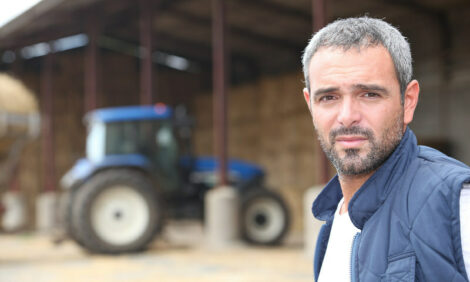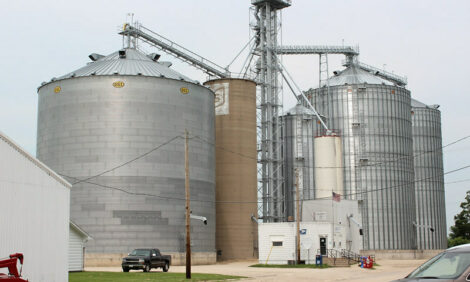



Weekly Australian Cattle Summary
AUSTRALIA - This report is a collection of weekly cattle price summaries from each Australian state by the Meat & Livestock Australia.South Australia
Quality quite mixedDublin cattle numbers slipped back by 222 head to 918 in a better quality yarding of predominantly supplementary fed yearling cattle. They were a credit to their owners and attracted strong competition with local butchers and interstate operators at the forefront, as prices rose to much dearer levels. While there were a few drafts of plain 1 score pastoral cattle offered that sold to cautious bidding from feeder orders, the same couldn’t be said about some lines of well bred 1 score Poll Hereford lightweights. These sold to spirited bidding that left prices averaging around 209¢/kg.
Naracoorte’s yarding of 954 witnessed numbers increase by 265 head and featured some excellent quality vealers that attracted some strong bidding. This being due to an Adelaide Hills wholesaler joining in on suitably weighted pens, with the steers peaking at 219¢, and the heifers at 229¢/kg. There were also some medium weight and heavy yearlings that had been supplementary fed with those not having been treated with HGP’s attracting the better prices even though some were up around the 500kg mark.
There was strong feeder and restocker inquiry, particularly with a seasoned buyer back in action sourcing lightweight Angus steers at around the 200¢/kg mark, probably due to the much dearer prices paid at last Friday’s Mt. Gambier store cattle sale. Mt. Gambier had a smaller yarding of 1198 head that featured a very mixed quality runs of young cattle and grown steers, while having an excellent quality run of beef and dairy cows that sold to very strong SA and Victorian processor competition.
Fluctuating price trends
Vealer steers were sourced mainly by feeder and restocker orders at rates 2¢ to 12¢ more as some sales rose above the 200¢/kg mark. The trade also tended to pay more for prime vealers with those sales mainly between 188¢ and 236¢/kg. While D muscled sales of vealer heifers were cheaper, C muscled heifers were mostly 4¢ to 10¢ dearer as they attracted rates between 180¢ and 229¢/kg.
Most light and medium weight yearling steers finished with feeders and restockers at unchanged to dearer prices up to 190¢, with trade purchases of medium and heavy steers fluctuating from 10¢ dearer to 7¢ cheaper as most sales ranged between 170¢ and 230¢/kg. A large number of yearling heifers also finished with feeders and restockers in yardings more suited to their requirements as most heifers sold between 140¢ and 185¢/kg.
Medium weight grown steers were 4¢ cheaper, while remaining unchanged on the heavy steers and bullocks as most C muscled sales ranged between 170¢ and 184¢/kg. Most carcase weight prices were in the mid 300¢/kg range. Despite a general weaker trend at the SALE, prices for cows were mainly 1¢ to 4¢/kg dearer due to the strong inquiry at Mt. Gambier’s sale.
Queensland
Supply eases backSupply eased 16% from the elevated levels of the previous week at physical markets covered by MLAs NLRS. Cow numbers remain high, while the supply of steers and bullocks remains relatively small. Calves continued to dominate the young cattle available, and slaughter grades of vealers yearling steers and heifers are diminishing with most more suited to feed on operators or restockers.
Values at the early week markets were very mixed. Certified grainfed lines lifted overall quality, steers and bullocks improved by a few cents, and the yearling heifer portion experienced a large lift in price. However cows lost ground and there was no joy in the young lightweight categories where a cheaper trend developed. Nevertheless by midweek and the forecast of rain values for young cattle turned around to experience a large boost of 20¢/kg. Reports of rain over the border midway through the sale saw additional support from interstate buyers on the poor condition and lightweight categories. Yearling steers and heifers to feed achieved some gains especially the medium weight classes where improvements of 5¢ to 12¢ were recorded. Cow values also experienced a lift with the medium weight score 2 and 3s receiving the most attention. However this trend did not follow through to the large numbers of heavy grades of cows where prices battled to remain firm, and only lift slightly on the top-quality lines.
Feed grain buyers are still waiting to see how much rain will fall, and this will give some indication of how big the winter crop planting will be.
Mixed trend in values
Poor condition grades of calves returning to the paddock improved 6¢ to average 149¢ and made to 187.2¢, with better condition lines averaging 156¢/kg. A good supply of slaughter grades made to 170¢ to average 149¢/kg. Vealer steers sold to feeder operators 9¢ better at 173¢, with some to 188.2¢/kg. Vealer heifers to the trade picked up 2¢ to make from 149¢ to 187.6¢/kg. Lightweight yearling steers to feed showed little change, while medium weights lifted 12¢ to reach a top of 179¢/kg. Yearling heifers to the trade averaged close to 175¢ for the certified grainfed's and 164¢ for supplementary fed grades.
A very small number of medium weight grown steers to feed generally sold around 161¢/kg. Heavy steers made to 188.6¢ to average 168¢, and a few certified grainfed's reached a top of 189.2¢/kg. Bullocks averaged 167¢ and made to the occasional 190¢/kg. Medium weight score 2 and 3 cows averaged 101¢ and 123¢ respectively to improve 1¢ to 4¢ overall for the week. Heavy 3 scores lost 3¢ to average 124¢, and a large number of 4 scores showed no change at an average of 133¢, with a few making to 147.2¢/kg. Good heavy bulls made to 141.2¢, plain condition grades averaged 117¢/kg.
New South Wales
Numbers fall againCattle numbers at auction sales fell almost as dramatically as they rose last week as vendors continue to respond to seasonal forecasts and weekly price fluctuations. High hopes for good general rain this week and the cheaper market last week combined to cause a fall in numbers at all NLRS reported selling centres. Yardings fell consistently across the state with many halving numbers. The one exception was Wagga which yarded similar numbers at 1745 head. Young cattle quality and condition also deteriorated with notably fewer supplementary fed pens at most centres as producers hold out for a market lift for the relatively few prime stock being consigned. As has been the case for most of the year, the great majority of young cattle were suitable for restockers and feeders but these were also generally of lesser quality and condition, reflecting in part the affect of the approaching winter.
Significant price rises were recorded for feeder and restocker cattle at some centres, particularly later in the week, but equally large falls occurred at others. Most of the trade categories remained close to firm.
The export section was again dominated by cows although some centres reported moderately improved supplies of grown steers. Light and medium weight cows were most prevalent as heavy four scores become increasingly scarce. Increased restocker interest in suitable light weight cows drove a stronger market for these with many centres reporting rises of 5¢/kg or more. Medium and heavy weights recorded smaller price rises.
Variable prices
Young cattle prices showed substantial fluctuations this week as seasonal and market uncertainty continued to under-pin a cautious approach from both buyers and sellers. The prospect of late-week rain and a substantial drop in consignments assisted demand for the better quality feeder and restocker weaners and yearlings at a number of centres with price gains of 10¢ to 20¢/kg.
Overall, prices generally lifted with restocking vealer steers ranging from 152¢ to 205¢ to average 11¢/kg dearer. Medium weight C3 vealer steers to kill were 6¢ dearer and reached 216¢/kg. Light and medium weight yearling steers to on-feed were 10¢ to 14¢/kg dearer, trading from 155¢ to 203¢ to average around 185¢/kg. Similar heifers were 4¢ dearer and reached 173¢/kg. Most other young cattle sold only a few cents either side of firm.
Heavy grown steers were 4¢/kg dearer to processors, averaging 168¢ but lighter weights to feeders slipped 4¢ to 7¢ although limited numbers and plainer quality were factors. The cow market was stronger across all categories with the greatest rises of 8¢/kg for light D1 and D2s as processors and restockers competed strongly. These ranged from 75¢ to 117¢/kg. Medium and heavy weights appreciated by 2¢ to 3¢ with C3 medium weights averaging 120¢/kg and heavy 4scores averaging 133¢/kg.
Western Australia
Saleyard supplies remain limitedMuch of the northern pastoral areas of the state enjoyed further rainfall this week, which will further enhance seasonal and feed conditions. Mustering activity is on the rise with the first live export boats of the season having already been loaded and departed. Further south in the agricultural areas fortunes remain mixed. The normally safe areas of the Midwest remain in severe drought having received little or no rainfall over the past month, where they would normally be nearing the end of seeding programmes. For much of the remainder of the Ag districts the strong germination hangs in the balance following on from a week to 10 days of fine and dry weather. Hand feeding continues in the majority of areas with most calving programmes finished.
A continued lack of slaughter space remains a hindrance to producers and agents, but it is expected that supplies of finished cattle will tightened over the next month and during the winter months. To combat this some works have now released forward contracts for these periods in an attempt to shore up supplies. Currently the supplies of grain finished yearlings is so large that it is now placing downward pressure on the market outside of cattle under forward contract. The volumes of cattle forwarded to saleyards remained limited with the Great Southern sales remaining dominant.
Slaughter cattle volumes accounted for a limited percentage of all three sales with young lightweight stores making up the majority of volumes. The greatest numbers of cattle sold were sourced from local areas with pastoral supples very limited.
Heavy cows and bull dearer
Vealer supplies were tight with most being of lightweight and mixed quality. Local trade and retailer demand remained solid with graziers continuing to underpin the market. Grain finished yearling supplies increased at both Midland and the Great Southern sale and accounted for the largest percentage of any of the slaughter cattle classes. Increased numbers in both saleyards and direct to works have seen demand slacken and subsequently physical rates eased from the recent stable values. Agents have also reported that this is the case with sales directed direct to works. The supplies of finished grass finished trade weight yearlings were extremely limited and the majority were purchased by the feeder sector. The quality of the store portion of sales this week remained mixed and predominately of lightweight with the volumes of heavier weights continuing to constrict.
Feeder demand remained very selective in regard to both quality and weight. Grazier activity was area specific and eased as concern for rainfall begins to be taken more seriously.
The cow market enjoyed a buoyant trade demand and competition with the market making marginal increases on last week. This was also the case in heavy weight bull sales, despite recent rises in the Australian dollar.
TheCattleSite News Desk


